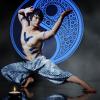 Submitted by Chen on
Submitted by Chen on

Image by 【中文ID】愚木混株 【Instagram】cdd20 from http://Pixabay.com
If a doubt arises on the spiritual path and there’s a fear that it will crush the peace you’ve found, welcome it in! This doubt is no threat; it is, in fact, a friend, a messenger from truth to truth.
What good is a truth that can’t stand up to doubt? How reliable is a solution to the dilemmas of identity and suffering that can’t resist the apparent challenge of any proposed problem? To doubt the ultimate value of such ‘solutions’ is natural. As the Buddha says in the Kalama Sutta (Burmese: ကာလာမသုတ်; Thai: กาลามสูตร):
“Yes, Kālāmas, it is proper that you have doubt, that you have perplexity, for a doubt has arisen in a matter which is doubtful.
Now, Kālāmas, do not be led by reports, or traditions, or hearsay. Be not led by the authority of religious texts, not by the delight in speculative opinions, nor by seeming possibilities, nor by the idea: ‘this is our teacher.'”
In essence, the Buddha is pointing to the value of doubt in inviting direct investigation without settling for hearsay or the views, authority, or reports of others. It is a central truth of all mystic paths both Eastern and Western that mere faith without direct realization will never offer lasting satisfaction.
How can there be stabilized faith in firsthand realization if we the greatest doubts the mind can raise have not been faced? Discerning doubt is a vital tool to stabilization; it cuts through all that is doubtful and leaves only the truly reliable behind.
In Chinese Ch’an Buddhism, the root of Japanese Zen, Great Doubt was considered to be one of the most reliable and effective tools on the Way of awakening.
Ch’an students would build up the force of their doubting and compile all of their minor doubts together into a massive ‘doubt block’ that could only be broken through by the direct apprehension of a truth beyond all doubt.
Nothing else would work to guarantee stabilized abiding in the reality unveiled in glimpses or realization. For these Ch’an students, the doubt block became a ‘gateless gate’ between the illusion of being bound and the reality of the boundless.
And yet, if the fear of losing whatever we thought we had gained were to push that doubt away and repress it, how could the doubt do its job? Doubt offers nothing but an invitation to examine and confirm the truth, and that is a great gift on the Way.
In this sense, doubt is an instrument of truth, not a threat to it; this is a hallmark teaching of both Zen and of Ch’an. Faith has its place and so does doubt. Faith without direct investigation rests on speculative ground and is subject to wobbling, increasing, and decreasing; doubt that leads the way to direct investigation and unshakable stabilization is truly worthy of faith.
So, if doubt arises, trust it, trust the not-knowing and find out where this doubt is arising from. What is the ground of this doubt? What is it presupposing about reality and about you, what is it assuming to be true, and how does it claim to know that to be so? Where is this doubt arising right now? What’s aware of it, regardless of its content?
As the great master of Advaita Vedanta, Ramana Maharshi says:
“All doubts will cease only when the doubter and his source have been found. Seek for the source of the doubter, and you will find that he is really non-existent. Doubter ceasing, doubts will cease.”
If what we find to be true seems like it can be shaken and is doubtful, then it can’t be the Way of stabilized peace. This, the masters of Ch’an and Zen Buddhism tell us again and again, as do many of the Sufi masters, Christian mystics, Jewish Kabbalists, and Hindu Advaitins. What many of the world’s wisdom traditions’ wisest masters agree on may well be worth entertaining.
If you doubt this, good! Trust that doubt. Dive deeply into it. Free fall into not-knowing. Push this doubt all the way. Withdraw your clinging and belief from everything that seems doubtful or to have a shaky or conditional foundation, even spiritual beliefs, realizations, experiences, and meditative states. If it wasn’t always here and seems to depend on fleeting conditions, how can it be the unshakable Ground (Tibetan: གཞི, Wylie: gzhi; Chinese: 基 (Pinyin: Ji); Korean 의지 (ŭiji); Japanese:エジ (eji)) of stabilized freedom?
Deep Trust goes deeper than faith.
It trusts faith, but it doesn’t stop there.
It’s so deep that it even trusts doubt.
“To live in this faith is the road to non-duality,
because the non-dual is one with the trusting mind.
Words!
The Way is beyond language,
for in it there is
no yesterday
no tomorrow
no today. “
~ Faith Mind Inscription (Hsing Hsing Ming) by the Third Patriarch of Zen, Seng Ts’an
Adam J. Pearson
https://philosophadam.wordpress.com/2016/11/10/trust-doubt-doubt-on-the-way-of-nonduality/
- 359 reads